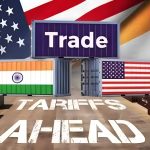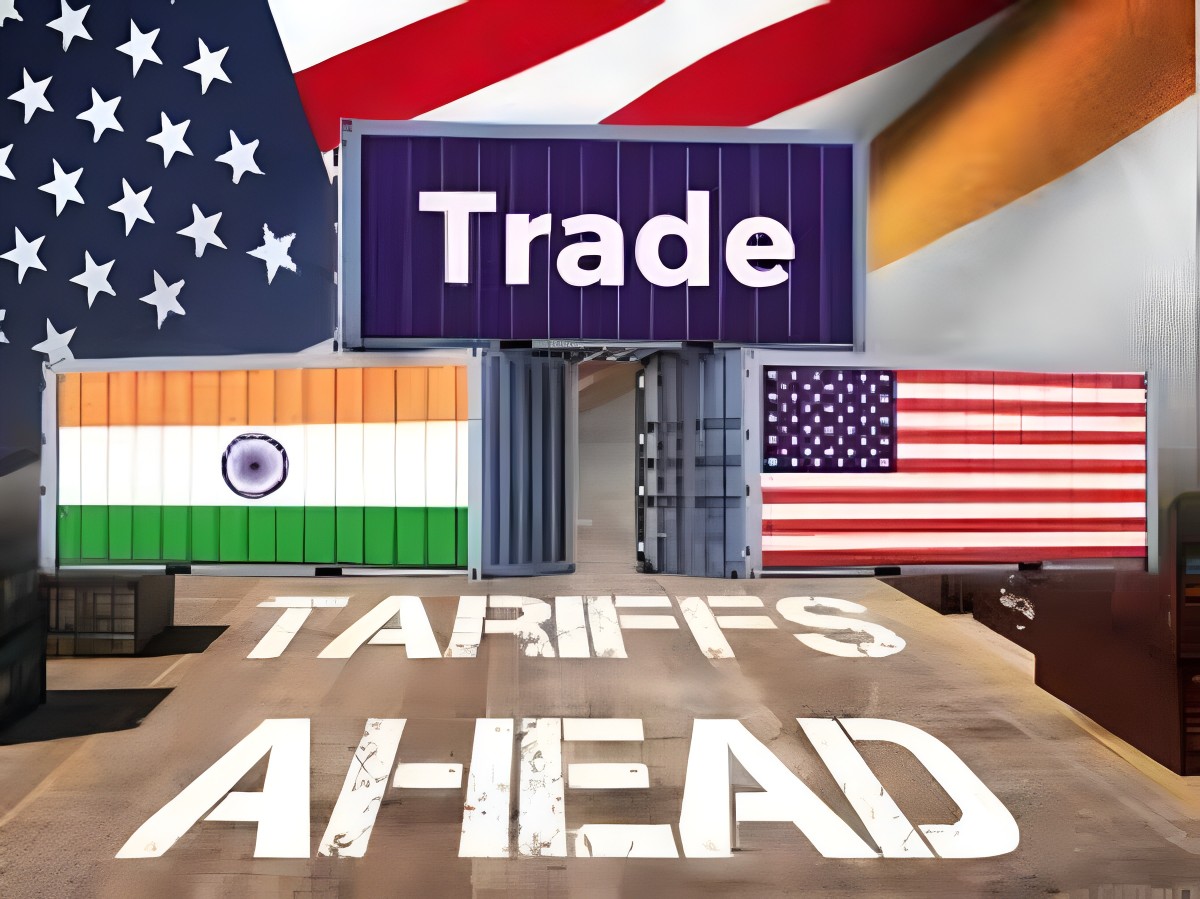Introduction
Trade tariffs—import duties or levies that a country imposes on foreign goods—have long been used as tools of economic policy. In 2025, many countries, particularly the United States, have aggressively expanded tariff policies, making trade protectionism a central feature of global commerce. These measures are having profound ripple effects across global supply chains, altering sourcing strategies, raising costs, and prompting structural shifts in how goods are produced, moved, and consumed.
In this article, we explore:
- The context and driving forces behind new tariffs in 2025
- How tariffs affect supply chain dynamics (costs, flows, risks)
- Industry‑level impacts
- Corporate and national adaptation strategies
- Risks, tradeoffs, and the outlook ahead
Also Read:Cloudburst in Dehradun: What It Reveals About Rising Climate Risks
1. Context and Driving Forces in 2025
Shift Toward Protectionism & Geoeconomic Fragmentation
In recent years, global trade has become more fragmented by geopolitical tensions, supply chain vulnerabilities exposed by COVID‑19, and rising competition for strategic technologies. Many nations are increasingly viewing trade as a tool of national security and economic sovereignty, rather than simply efficiency.
This has led to more frequent use of tariffs, export controls, and trade restrictions.
In 2025, the U.S. has rolled out a sweeping tariff regime: a default 10 % baseline duty on imports from all countries, with higher “reciprocal” rates for nations deemed to maintain protectionist barriers.
Certain sectors face extreme levies—for instance, furniture, pharmaceutical imports, heavy trucks, cabinets, and more.
At the same time, retaliatory tariffs from trading partners (e.g., EU, Canada, China) have complicated the landscape.
These policies reflect a departure from old patterns of multilateralism toward more bilateral/“selective” trade alignments.
Tariffs as Shock to Global Trade
Tariffs act as negative demand shocks: by making imports more expensive, they reduce consumption of foreign goods.
Because much modern manufacturing depends on global value chains (GVCs)—in which components cross multiple borders—tariffs at one point in the chain propagate disruptions along the entire network.
Analyses estimate that trade flowing through global value chains may shrink by ~2 percentage points more than simple bilateral trade, with steep contractions in sectors like transport equipment and electronics.
The OECD has also flagged that mounting trade barriers are key reasons for lowering its global growth forecast to 2.9 % in 2025.
2. Mechanisms: How Tariffs Disrupt Supply Chains
Cost Increases & Margin Squeeze
Tariffs raise the landed cost of imported inputs and final goods. Firms have to decide whether to absorb these increases (reducing margins) or pass them on to consumers (higher prices).
In the U.S., estimates suggest 60 % of companies have faced logistics cost increases of 10–15 % due to tariffs.
For example: a 10 % tariff on imported apparel might translate into a 3–5 % increase in retail prices.
In capital‑intensive or low-margin industries (electronics, autos), tariff burdens can sharply erode profitability or force firms to curtail investments.
Inventory Behavior & “Front‑Loading”
Anticipating future tariffs, firms may engage in pre‑stockpiling or front‑loading imports to “beat” the tariff date. This creates temporary surges in trade and strains logistics networks.
This can cause port congestion, warehousing capacity constraints, and misalignment of inventory levels with demand.
But once tariffs take effect, demand often drops (because of higher prices), leaving excess inventory and destabilized flows.
Delays, Lead Time Risk & Reliability Decline
Tariffs introduce additional customs checks, regulatory compliance burdens, and unpredictability, increasing lead times and delays.
One study found that firms responding to increased delivery time risk raised inventory buffers, and the delays themselves reduced output by ~2.6 % and raised prices by ~0.4 %.
Longer delays and greater uncertainty push firms to carry higher safety stock, which raises working capital costs.
Reconfiguration & Rebalancing of Supply Networks
Because tariffs make certain sourcing routes expensive or unviable, firms adapt by:
- Nearshoring / Reshoring: Relocating production closer to demand markets or to countries with favorable tariff status.
- Supplier diversification / “China plus one”: Shifting procurement to countries such as Vietnam, India, Mexico, ASEAN, etc.
- Regionalization of value chains: Reducing cross‑border complexity by consolidating more stages of production within a trade block or region.
- Vertical integration / in‑house sourcing: Reducing dependence on external suppliers for critical components.
- Dual sourcing and redundant capacity: Maintaining backup suppliers that are tariff‑safe.
However, these shifts are costly, time-consuming, and often less efficient initially. Many alternative suppliers lack the scale, quality, or specialized capabilities of established ones.
Trade Route & Logistics Adjustments
Tariff regimes also lead to rerouting of trade flows:
- Some cargo avoids chokepoints (or high‑tariff routes) via longer (but tariff‑safe) routes – e.g. bypassing the Red Sea, longer maritime routes, or extra land segments.
- Rail freight between China and Europe has seen growth (as an alternative to ocean) in some corridors.
- Some logistics providers may bundle or reorder in ways to minimize tariff exposure (e.g., reclassification, origin shifting, or assembling in low‑tariff zones).
- Carriers reduce capacity, cancel sailings, or optimize routes given lower demand in certain segments.
3. Sectoral Impacts & Illustrative Cases
Different industries feel the tariff shock in distinct ways. Below are some examples.
Automotive / Transport Equipment
- Tariffs on auto parts, components, and finished vehicles raise production costs. Many automakers relying on cross‑border supply chains (e.g. from Mexico to USA) are impacted heavily.
- Some plants may relocate or downsize. For example, Ford estimated ~$1.5 billion hit to profits in Q1 2025 due to higher input costs.
- Countries heavily engaged in auto exports (like South Africa) are suffering steep declines due to 25 % U.S. tariffs.
- Aston Martin, for example, has issued profit warnings citing tariff pressures in key export markets.
Electronics / Semiconductors
- Many electronics companies source components across Asia. Tariffs push costs upward and create incentive to shift manufacturing to lower‑tariff jurisdictions.
- Apple has reportedly shifted 15–20 % of its production to India and Vietnam to reduce tariff exposure.
- Tariffs on semiconductor equipment and raw materials affect the upstream supply chain, risking bottlenecks and higher capital costs.
Pharmaceuticals & Healthcare
- Tariffs on pharmaceutical imports—especially branded drugs or active pharmaceutical ingredients (APIs)—can raise medicine prices and stress health systems.
- Some companies are rethinking sourcing of APIs, shifting to alternative regions or encouraging domestic production.
Consumer Goods / Apparel / Textiles
- Tariffs on textiles from China have pushed brands to diversify sourcing toward Vietnam, Bangladesh, India.
- Because these goods often have thin margins and depend on low-cost supply chains, tariff cost pass-throughs may reduce consumption or brand competitiveness.
Agriculture & Commodities
- When retaliatory tariffs hit agricultural exports (e.g. soybeans), farmers lose access to key markets, and commodity flows shift.
- Supply chains for food, feed, and fertilizers, which are already global, get further disrupted by import duties, transport cost increases, and sourcing shifts.
4. Adaptation Strategies & Resilience
To survive in a high‑tariff environment, corporations, supply chain leaders, and governments are pursuing various strategies.
Supply Chain Resilience & Dynamic Planning
- Tariff exposure assessments: Regularly mapping which components, SKUs, or suppliers are most vulnerable.
- Flexible contracts & modular design: Designing products so components can be swapped in or out depending on tariff regimes.
- Scenario planning & simulation: Stress‑testing supply networks under various tariff or disruption scenarios.
- Increased buffer inventory: Holding safety stock or strategic reserves to absorb disruptions—though this increases cost.
- Digitization & real‑time visibility: Better data, tracking, and analytics help respond faster to changes.
Reshoring / Nearshoring & Regional Consolidation
- Countries like Mexico, India, Vietnam are benefitting as alternatives for U.S. firms to relocate manufacturing.
- Some governments are offering incentives to encourage domestic manufacturing to reduce import dependence.
- However, reshoring faces hurdles: higher labor costs, lack of infrastructure, skill gaps, and time to set up operations.
Diversification & Multi‑Sourcing
- Firms are avoiding dependency on a single supplier or region; they adopt a “China + 1 or 2” strategy.
- Portfolio of suppliers gives flexibility to shift volumes quickly when tariff regimes shift.
Strategic Alliances & Trade Agreements
- Firms and governments negotiate trade deals, seek tariff exemptions or quotas, or utilize free‑trade zones to reduce exposure.
- Corporations may lobby for favorable tariff treatments or carve‑outs for critical sectors.
Vertical Integration & Localization
- Some manufacturers integrate upstream (make their own components) or downstream (assemble closer to end markets) to reduce cross-border exposure.
- Localization also includes packaging, finishing, and customization in the destination country to minimize import content.
Financial Hedging & Cost Sharing
- Use of hedging instruments (currency, commodity futures) to stabilize input cost variances.
- Contracts may share tariff risk between supplier and buyer (e.g. price adjustment clauses).
5. Risks, Tradeoffs & Outlook
Tradeoffs & Constraints
- Efficiency vs resilience: Traditional global supply chains prioritized lowest cost; the new focus is on robustness, which often comes at higher cost.
- Speed vs flexibility: Rerouting, supplier changes, or reshoring can introduce delays and learning curves.
- Upfront investment: Building new facilities or relations in alternate geographies takes capital, time, and regulatory navigation.
- Scale & capabilities: Alternative suppliers may lack scale, quality control, or technology, making full transition challenging.
- Policy volatility: Tariff regimes may change rapidly with political shifts, making long-term planning difficult.
Spillover & Systemic Risks
- Retaliation cycles: Tariff escalation between major economies can amplify disruption globally.
- Fragmentation of trade blocks: Multiple regional or bilateral blocs may create “trade islands,” undermining global integration.
- Investment slowdown: Uncertainty dampens capital expenditure, cross-border FDI, and long-term innovation.
- Consumer inflation: Higher input costs tend to push up consumer prices, harming demand.
- Supply chain fragility: Over‑reaction or over‑diversification may result in complexity and inefficiency.
Outlook for 2025 and Beyond
- Global trade volumes are expected to decline: projections suggest a 5–8 % contraction in trade flows relative to pre‑shock levels.
- Companies will continue to recalibrate and adapt, but the transition will be uneven and painful for many.
- Strategic geographies (Southeast Asia, India, Mexico) will gain importance as alternative manufacturing hubs.
- Over time, we may see more stable “trade blocs” built around like‑minded states or alliances, reducing global interdependence.
- The success of adaptation will depend heavily on policy consistency, investment in infrastructure, workforce development, and international cooperation.
Conclusion
The aggressive use of tariffs in 2025 marks a turning point in global trade dynamics. What were once smooth, low‑cost, cross‑border supply chains are being challenged by the realities of geopolitics, risk management, and strategic sovereignty. The cumulative impact is forcing manufacturers, retailers, and nations to reimagine how, where, and from whom they procure goods.
While no single strategy is universally successful, those firms and nations that proactively assess exposure, diversify intelligently, invest in resilience, and remain nimble are more likely to thrive in this new “tariff era.” The road ahead is fraught with complexity, but adaptation and foresight will determine winners and losers.
Also Read : Nitin Gadkari Major Warning After Operation Sindoor: ‘World War III Could Erupt Anytime











